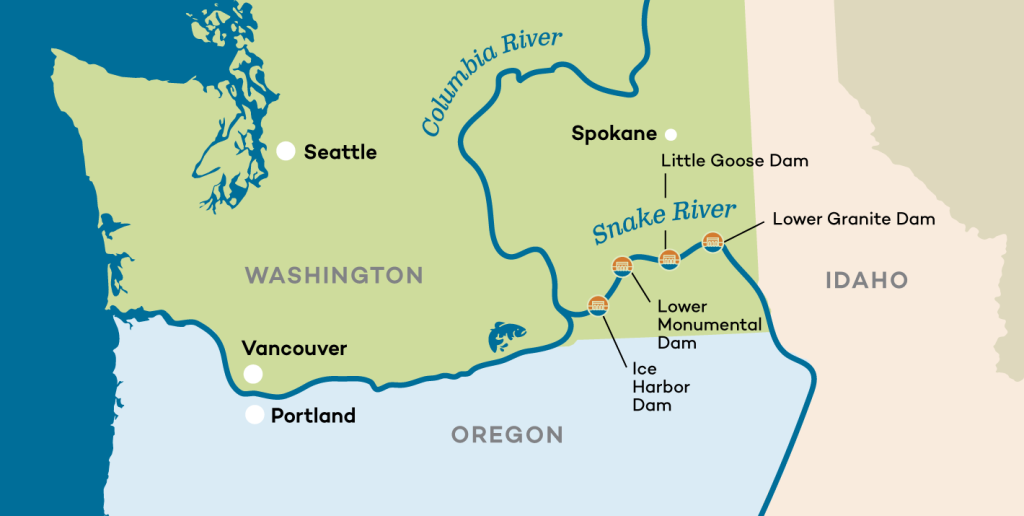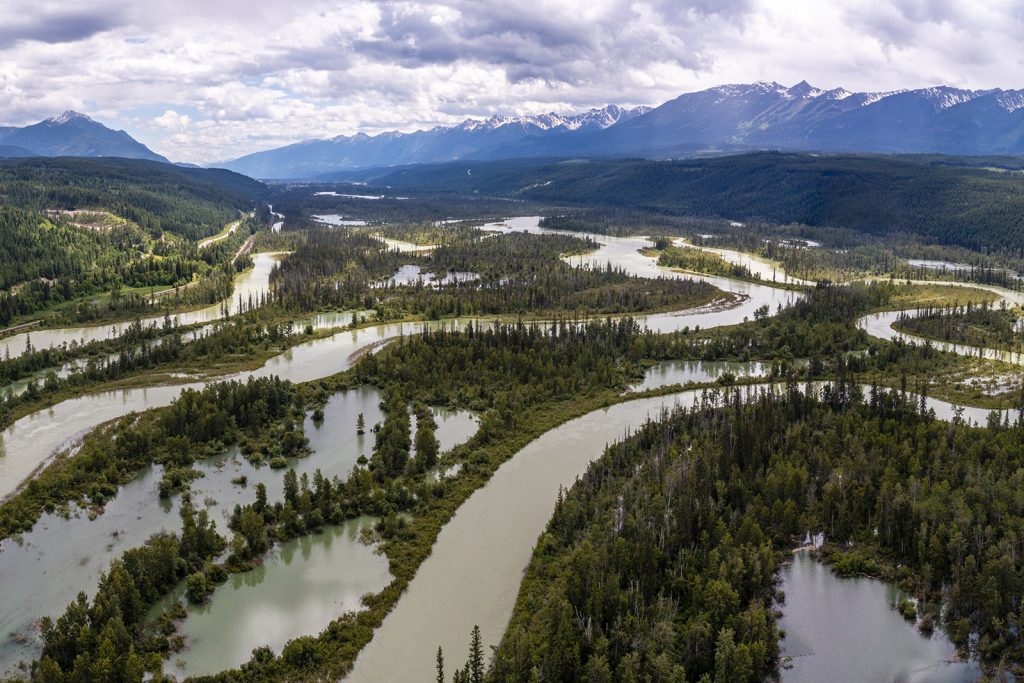By Miles Johnson, Legal Director
Originally published in Columbia Riverkeeper “Currents” Issue 1, 2025
The Lower Snake River has become shorthand for a regional debate about energy production, salmon recovery, and Tribal rights. But policy conversations about if and how to replace these four dams and their services tend to ignore that the Lower Snake is also a real, physical place. This spring, I was fortunate to spend two days in a boat exploring part of the Lower Snake, in the company of people with deep relationships to this landscape.
The trip was part of an annual event called the Healing Snake River Journey. Ione Jones, the executive director of Khimstonik, has organized this multi-day canoe journey and camping trip each year since 2023. The Journey’s goal is to reconnect people with this landscape and highlight the urgent need for Lower Snake River dam removal. When Columbia Riverkeeper was approached about supporting and attending the Journey, I knew it was a great fit and a rare opportunity.

I loaded up Columbia Riverkeeper’s patrol boat to serve as a safety and support vessel for the Journey, and drove up the Gorge and out across the Palouse to meet the paddlers. Roughly 30 people in five canoes—including two hand-hewn traditional cedar dugouts—set out from Lyons Ferry, WA, just below Little Goose Dam. The sky was blue and the wind was calm, a perfect day for paddling. I was joined in Columbia Riverkeeper’s boat by three boys, and as we lazily trailed the canoes down the reservoir that day, we had plenty of time to catch a few smallmouth bass and jump off the side of the boat for a cooling swim.
The second day of the Journey explored the lower half of what the U.S. Army Corps of Engineers named—with their typical patriarchy, bland accuracy, and lack of imagination—Lake Herbert G. West. More gorgeous weather greeted us, but this time with an uncommon downriver breeze lasting the entire day. For long stretches, the canoes hung together and drifted with the wind, sometimes with the help of make-shift sails. My three young passengers from the day before were learning to paddle, giving me time to explore side channels, take pictures, and scout ahead. Because of the tailwind, we also had time to beach the boats at the head of a protected cove for a mid-afternoon swim, a leisurely shore lunch, and a hike to a bluff overlooking Lower Monumental Dam.
While time on the water is always enjoyable, my overall impression was that the Lower Snake River has been completely abandoned to hydropower generation. We were alone for two whole days. We saw no other boaters, and no public road accesses this stretch of the Lower Snake. And why come here? There are no beaches, as the reservoirs stop the accumulation of sand from upstream and the water level remains the same year-round. Spring Chinook were running, but salmon fishing is closed because the dams have pushed these iconic fish to the brink of extinction. The water appeared absolutely still, with no discernable current. A few barges passed our little armada, hauling juvenile salmon and steelhead (rather than wheat) downstream. A steady stream of trains rolled by on the track paralleling the south bank. Though less than 40 miles from both Tri-Cities and Walla Walla, this part of the Lower Snake was unnaturally calm and empty. The river is quiet, buried under a vast stillness of artificially high water.
I am grateful to have been able to experience this landscape alongside activists like Ione Jones and others, who are descendents of the original inhabitants of the lands along the Lower Snake River. Khimstonik advocates for the restoration of these lands, which were seized from native people by the U.S. Army Corps of Engineers, as well as bringing back the people and their relationships to this landscape. Lower Snake River dam removal is an essential part of Khimstonik’s mission, and Columbia Riverkeeper’s.
Khimstonik hopes to grow the annual canoe journey in future years, to connect more people with this unique and largely unseen landscape. You can support Khimstonik’s efforts here, and stay tuned for information about next year’s Journey!

